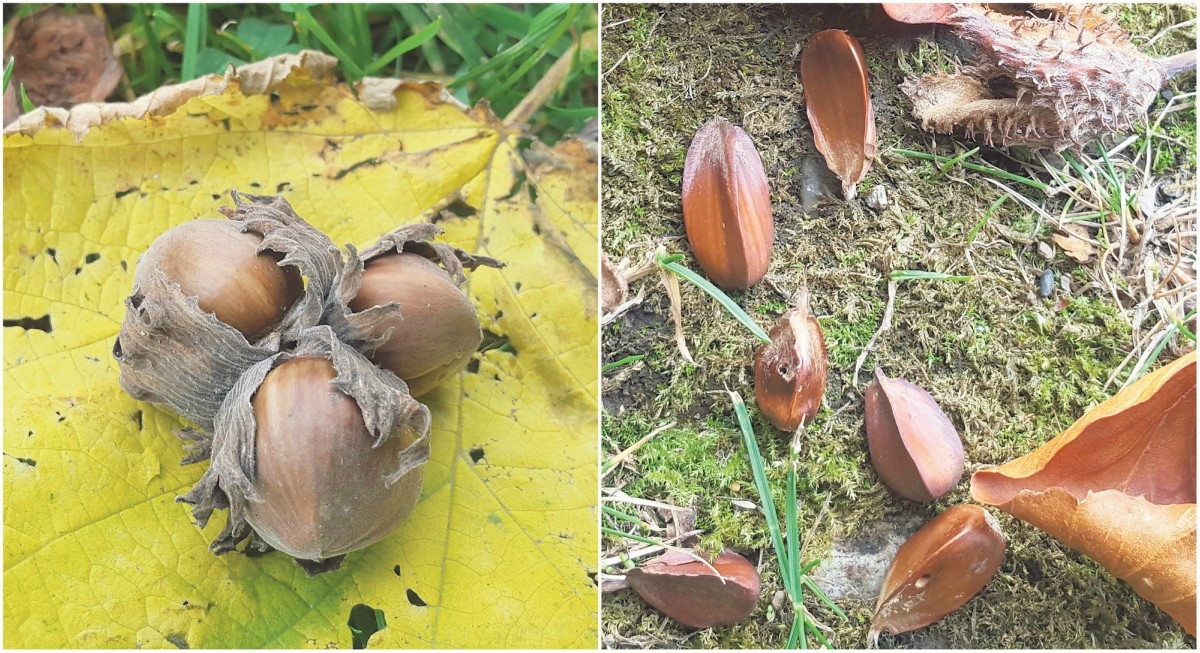
Nature on our doorsteps: Going nuts!

By Rosaleen Dwyer
Rosaleen Dwyer is the County Heritage Officer at South Dublin County Council – every week she gives us an insight into the natural heritage around us and the beautiful biodiversity of the plants and creatures.
At this time of the year, a lot of effort in nature is focused on spreading seeds for next year’s generation, far away from the parent plant.
A cluster of ripe hazelnuts (L) and beechnuts (R), which are ready for squirrels to nibble on
Soft fruits like blackberries, with their seeds safety hidden inside tempting fruit, wait to be eaten by birds or mammals so that their seed will be excreted elsewhere.
Trees like sycamore, ash, and elm have winged seeds and wait for the wind to spread their ‘helicopters’ or ‘keys’ far and wide.
Chestnuts, acorns, hazelnuts and beech nuts are heavier fruit. As these drop directly underneath the tree’s canopy, these must be dispersed in a different way.
Being highly nutritious foods, nuts and acorns are eaten by squirrels, birds and field mice.
They are readily picked up and taken away to be eaten in safety elsewhere.
Nuts are often dropped along the way or are buried by squirrels for safe keeping, to be eaten later on.
Very often, the location of these food stores or dropped nuts are forgotten and the nuts or acorns remain uneaten.
In this way, while a sizable proportion of the tree’s yield of nuts or acorns are lost to feeding animals, birds, or conker-gathering children, enough of them are dispersed, safe in their hiding place waiting for springtime.


